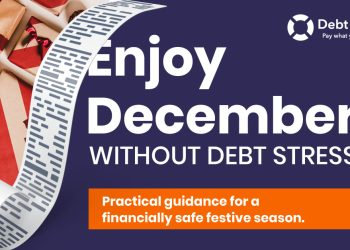Nevertheless it’s not all dangerous information behind the dire headline—and there is a chance to assist younger individuals, specifically, perceive the distinction between good debt and dangerous debt.
So, the place’s the excellent news?
Complete shopper debt in Canada was $2.55 trillion on the finish of the primary quarter (Q1) of 2025, up 4% year-over-year. That’s an enormous quantity—and curiously, virtually twice the federal authorities’s record-setting debt of simply over $1.4 trillion.
Nonetheless, that shopper debt quantity is down greater than $6 billion from the tip of 2024. Whereas common non-mortgage debt rose to $21,859 per particular person in Q1 2025, there could also be some legitimate causes for it.
Age is a think about debt acquisition
Debt, statistically, is a recurring difficulty for youthful individuals. It is smart that as individuals age, debt reduces—notably relating to mortgage debt. Nonetheless, it’s stunning how lengthy each scholar debt and shopper debt linger, effectively into pre-retirement, as proven within the beneath knowledge from mid-2024.
One of many key culprits proper now, particularly for younger individuals, is a powerful auto loan market, in accordance with the Equifax Canada Market Pulse Quarterly Shopper Credit score Traits and Insights Report. There could also be legitimate causes for this.
Automotive consumers look like reacting to the tariff tax difficulty, wishing to lock of their purchases earlier than anticipated value hikes. To know for those who can actually afford a car, do the credit score math up entrance—and embrace not simply the sticker value, but in addition the curiosity over the lifetime of your automobile mortgage. How are you going to scale back that?
Looking for assist from a tax or monetary advisor to grasp whether or not your automobile loans shall be tax-deductible also can assist scale back the after-tax price. Some working prices, like gasoline and oil or EV charging, and a portion of mounted prices like curiosity or capital price allowances could also be written off, with correct documentation, when the car is used for employment or self-employment functions. Converse to a tax specialist about that. (Additionally learn: How to save on your taxes with automobile logs.)
The mortgage math
New mortgage functions jumped 57.7% year-over-year in Q1 2025. That’s due largely to the variety of mortgages which have come up for renewal and refinancing, many at larger rates of interest. It’s also fascinating to notice that first-time house consumers returned to the market, with exercise up 40% from a 12 months in the past.
However whereas common month-to-month funds might now be dropping as a result of present decrease rates of interest, the typical mortgage dimension is rising—by 7.5% year-over-year. It’s essential to think about what the following renewal cycle would possibly appear like for right now’s new debtors.
In line with Bank of Canada research, 60% of these with mortgage renewals within the subsequent two years will face fee hikes. The elements that push rates of interest larger embrace issues like excessive inflation, low financial savings charges, reducing commerce, a lower in labour productiveness, excessive authorities debt, and the dangers of default. Lots of these elements are in play right now.
You’re 2 minutes away from getting the most effective mortgage charges.
Reply just a few fast inquiries to get a customized quote, whether or not you’re shopping for, renewing or refinancing.
Delinquencies: They’re in non-mortgage debt
On the subject of credit score delinquencies, nonetheless, monetary pressure is definitely worse for shoppers who don’t maintain mortgages. On this cohort, delinquency charges rose 8.9% year-over-year, in comparison with 6.5% for mortgage holders. Once more, youthful Canadians—these 18 to 25—have been hit hardest, experiencing a 15.1% improve in delinquency charges.
On the constructive aspect, the typical month-to-month bank card spend per card holder fell by $107 throughout Q1 2025, which is the bottom degree since March 2022.
Bear in mind, not all debt is dangerous debt. On the subject of judging good debt vs. dangerous debt, there are a few easy however essential guidelines:
- Borrow for property that respect. If you happen to should purchase a depreciating asset, be sure that it’s income-producing—that it helps you earn revenue from employment or self-employment, or from different investments like a enterprise or rental property.
- Think about whether or not the curiosity is tax-deductible. Shopper debt, for instance, is dangerous debt—it’s costly and never tax-deductible. Pay it off first except you owe cash to the Canada Income Company (CRA), through which case that quantity owed takes priority.
- Borrowing to put money into registered accounts isn’t deductible. An essential tax tip is that curiosity on loans to put money into a registered retirement savings plan (RRSP), tax-free savings account (TFSA), first-home savings account (FHSA), and many others. won’t be deductible. Bear that in thoughts in your monetary planning.
Debt suggestions for higher money circulate
Listed below are some efficient methods to handle debt and take again management of your internet money circulate:
1. Repay high-interest, non-deductible debt as quickly as doable. This contains bank card debt and high-interest loans, which may neither be written off in your tax return, nor used to construct your internet price.
2. Think about consolidating debt to repay smaller quantities first. Eliminate “debt muddle” however maintain two classes: tax-deductible debt and non-deductible debt.









